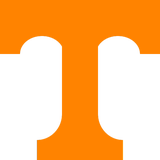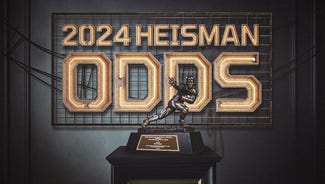
A behind the scenes look at how Bristol Motor Speedway transformed into a football stadium

It's the game the college football world has been waiting on, not so much for the play on the field, rather the spectacle of it all.
It's the Battle at Bristol, Saturday's showdown that will pit Tennessee vs. Virginia Tech at Bristol Motor Speedway, in the first major college football game played at the iconic Sprint Cup venue. In the process, it will almost certainly set a single-game college football attendance record, with more than 150,000 fans expected.
So yeah, it's an exciting night for college football fans everywhere, with a game being played under the most unique of circumstances. It's also an exciting night for the folks at Bristol, who have worked a long time to make it happen.
And when we say "long" we don't mean months, weeks or years.
"This game is 20 years in the making," Jerry Caldwell, General Manager of Bristol Motor Speedway told FOX Sports on Wednesday. "We've tried a few different times over the years to put things together, but the stars never quite aligned."
Well it's safe to say that the stars have aligned with kickoff set for at 8:00 p.m. ET, under the bright lights of a racetrack which has dubbed itself "The Last Great Colosseum." The game, which was first conceived back in the late 1990s was always intended to pit the Vols and Hokies --- schools that are nearly equidistant to Bristol on the I-81 freeway. An agreement finally was put in place back in 2013.
And now, the big question every fan wants to know: How the heck do you convert a racetrack into a football venue?

As Caldwell explains, the folks in Bristol have been preparing for this day since virtually the moment the game was announced in October 2013, and had to do it while planning for all the standard Sprint Cup, Xfinity and truck races that happen annually at Thunder Valley as well. Almost immediately the track hired some football-related experts to help get a jump start on "small" things, like setting up coaches' boxes and replay booths, as well as finding ideal locations for play clocks.
Then there was the big stuff, and nothing was bigger than the decision to remove video boards in the middle of the infield -- where the game will be played -- with a video screen that is attached by cables to towers on the outer edge of the stadium.
Simply put, it was a monumental task to install the new screen, especially since the stadium elected to do it in the largest way possible.
"Colossus," Caldwell said of the scoreboard, "is the largest four-sided, center-hung video screen in the world."
It measures 30 feet tall and 63 feet wide, and according to Caldwell doesn't block a single spectator's sightline.
QUOTE: "If you're not hyped about this game (#BattleAtBristol), you're dead." - @Iam_KevinJones#Hokies | #Vols pic.twitter.com/dh7o7L96Ci
— Battle At Bristol (@BattleAtBristol) September 7, 2016
Speaking of those sightlines, they became top priority for the staff at BMS, after they began converting the track to a football field full-time, following the last race of the season on Aug. 22. According to Caldwell the change began overnight, with 27 trucks coming in and out of Bristol Motor Speedway the day after the last race. In total, 450 truckloads of materials were brought in to help convert the infield into a playable football field.
The No. 1 priority? Raising the playing surface.
"We had to raise the infield three-and-a-half feet," Caldwell said. "It will help with sightlines [for fans] and also help with drainage. For racing, you want drainage in the middle [of the infield]. With football, you obviously want it to the sides."
An additional 5,000 seats were added behind the end zones. "Catch fences" used to protect spectators during NASCAR races had to be removed. Signage had to be altered. Two buildings on the infield had to be converted to locker rooms for the teams.
Oh, and one other thing too: A temporary stage had to be set up for a Kenny Chesney concert in the stadium on Friday. It will come just hours after the teams go through walk-throughs at the stadium, and will have to come down immediately after the show is over to ensure the racetrack is ready in time for kickoff.
"It took us two or three days to put up the stage," Caldwell said. "But we had timing on our side. We'll have about 12 or 14 hours to take it down."
There was one more major factor that had to be addressed: Ticketing.
While the schools handled a decent burden of the ticketing, BMS also had to handle a good load itself. Because of the demand, the racetrack actually spent the last couple years revamping their entire ticketing model. BMS has gone to a more "points-based" approach that is common in college athletic departments, which rewards regular visitors with "points" for the number of events they've attended, and the number of years they've regularly been coming to the racetrack.
According to Caldwell it's the only fair way to handle things. While there will be 150,000 fans inside the stadium, hundreds of thousands more --- yes, six figures --- had to be turned away.
"We've been joking around here," Caldwell said with a laugh. "There will be 150,000 fans in the stadium on Saturday night, and a million who claimed they were there a year from now."
Caldwell promises that those who do attend will be given a once-in-a-lifetime experience. It's one that they won't soon forget, and one that combines two of the greatest passions of Southern sports fans.
"Expect a fun, festive environment," Caldwell said. "Take all the great things involved with NASCAR, the tailgating for days, the events around the track, and combine them with all the great things about college football and that's what you have."
He paused, then continued.
"This will be an event people will be talking about for the rest of their lives."
Aaron Torres covers college football for Fox Sports. Follow him on Twitter @Aaron_Torres, Facebook or ATorres00@gmail.com.







